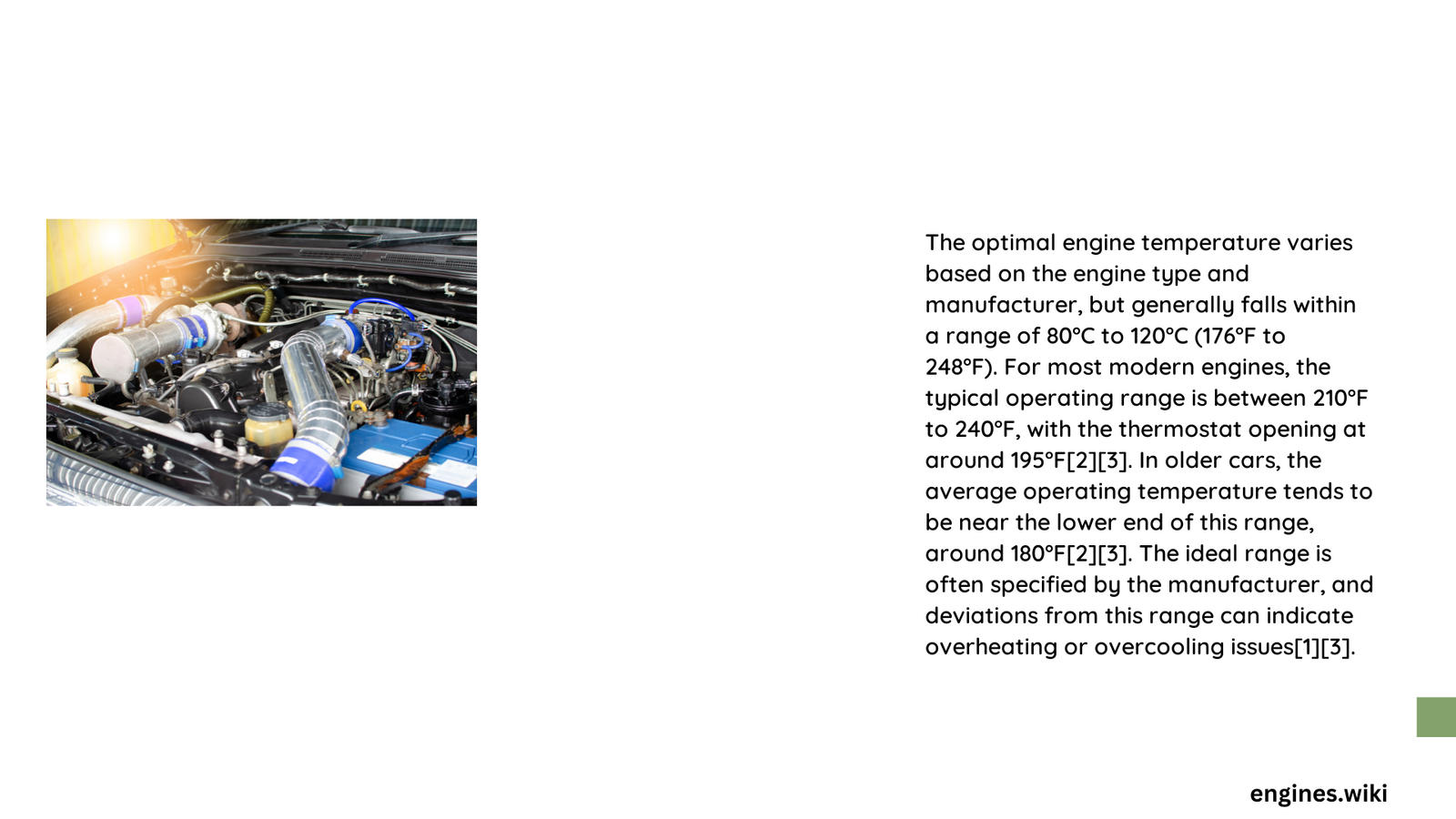Modern vehicle engines operate most efficiently within a precise thermal range that balances performance, fuel economy, and mechanical integrity. Understanding and maintaining the optimal engine temperature is crucial for preventing mechanical wear, ensuring peak performance, and extending the lifespan of your vehicle’s powertrain.
What Is the Ideal Engine Optimal Temperature?
Vehicle engines, whether gasoline or diesel, typically perform best within a specific temperature range. The sweet spot for most engines is between 195°F and 220°F (90°C to 104°C). This range ensures:
- Efficient fuel combustion
- Minimal mechanical friction
- Optimal lubrication
- Maximum energy conversion
How Does Temperature Affect Engine Performance?
| Temperature Range | Performance Impact | Potential Risks |
|---|---|---|
| Below 190°F | Increased fuel consumption | Poor fuel vaporization |
| 195°F – 220°F | Optimal performance | Minimal mechanical stress |
| Above 230°F | Potential engine damage | Overheating risks |
Why Temperature Matters for Different Engine Types

Gasoline Engines
Gasoline engines typically operate most efficiently between 190°F to 225°F (88°C to 107°C). Key considerations include:
- Precise fuel-to-air mixture
- Reduced carbon buildup
- Enhanced combustion efficiency
Diesel Engines
Diesel powertrains have slightly different thermal characteristics:
- Optimal range: 195°F to 220°F (90°C to 104°C)
- Higher compression ratios
- More robust cooling requirements
What Causes Temperature Fluctuations?
Several factors influence engine temperature:
- External Environment
- Ambient temperature
- Altitude
-
Humidity levels
-
Vehicle Operational Conditions
- Driving speed
- Load weight
-
Acceleration patterns
-
Mechanical Factors
- Coolant system efficiency
- Thermostat functionality
- Radiator condition
How to Monitor and Maintain Optimal Temperature
Recommended Practices
- Regular coolant system inspections
- Use high-quality coolant mixtures
- Check radiator and cooling fan functionality
- Monitor temperature gauge consistently
Warning Signs of Temperature Issues
🚨 Immediate Attention Required:
– Temperature gauge consistently above 230°F
– Steam from engine compartment
– Unusual engine performance variations
– Coolant leaks
Technical Insights for Enthusiasts
Thermal Management Technologies
Modern vehicles incorporate advanced thermal management systems:
- Electronic temperature control
- Variable cooling fan speeds
- Intelligent coolant circulation
- Adaptive thermal mapping
Potential Consequences of Improper Temperature
Short-Term Effects
- Reduced fuel efficiency
- Increased mechanical friction
- Inconsistent engine performance
Long-Term Risks
- Premature engine wear
- Potential component failure
- Significant repair costs
Expert Recommendations
- Maintain regular vehicle servicing
- Use manufacturer-recommended coolant
- Address temperature warnings promptly
- Invest in quality cooling system components
Conclusion
Understanding and maintaining engine optimal temperature is not just about performance—it’s about preserving your vehicle’s longevity and reliability. By staying informed and proactive, you can ensure your engine operates at its absolute best.
Reference:
– SAE International Thermal Management Research
– Society of Automotive Engineers Cooling Systems Guidelines
– National Institute of Automotive Research
